Is it possible to work with my CoreData model in the today extension in swift like in the original app? If yes, how can I create the NSManagedObjectContext?
I really have no clue, beside the group-identifier, but unfortunatly I don't know how to get the context..
In the past I created apps with the check at the beginning that I want to use CoreData and then I got the managedObjectContext via my AppDelegate.. But how can I do somethink like that in an extension? Apple doesn't offer information about that..
I edited this line in AppDelegate:
NSURL *storeURL = [[self applicationDocumentsDirectory] URLByAppendingPathComponent:@"HTWcampus.sqlite"];
to this (after including the group to both targets):
NSURL *storeURL = [[NSFileManager defaultManager] containerURLForSecurityApplicationGroupIdentifier:@"group.BenchR.TodayExtensionSharingDefaults"];
storeURL = [storeURL URLByAppendingPathComponent:@"HTWcampus.sqlite"];
NSLog(@"StoreURL2: %@", storeURL);
With that the existing database in my app was gone (what is great, because I think it worked to put the database in the shared segment).
But how can I create an instance of my context in the extension? And how can I access my NSManagedObject-subclasses?
In the extension I have this code so far:
var context: NSManagedObjectContext!
override func viewDidLoad() {
super.viewDidLoad()
var storeURL = NSFileManager.defaultManager().containerURLForSecurityApplicationGroupIdentifier("group.BenchR.TodayExtensionSharingDefaults")
storeURL = storeURL?.URLByAppendingPathComponent("HTWcampus.sqlite")
let modelURL = NSBundle.mainBundle().URLForResource("HTWcampus", withExtension: "momd")
let model = NSManagedObjectModel(contentsOfURL: modelURL)
let coordinator = NSPersistentStoreCoordinator(managedObjectModel: model)
coordinator.addPersistentStoreWithType(NSSQLiteStoreType, configuration: nil, URL: storeURL, options: nil, error: nil)
context = NSManagedObjectContext()
context.persistentStoreCoordinator = coordinator
}
Is this right? And if yes, how can I get my NSManagedObject-Subclasses in there? And do I have to add the momd-file to the extensions target? If yes, how can I do that?


